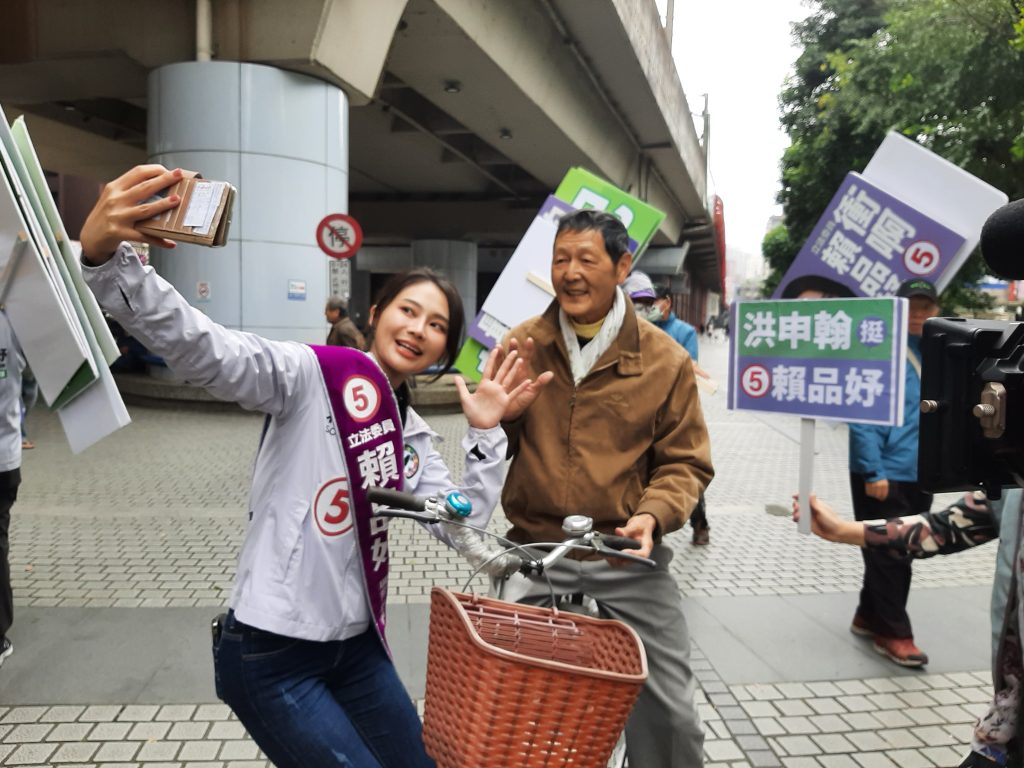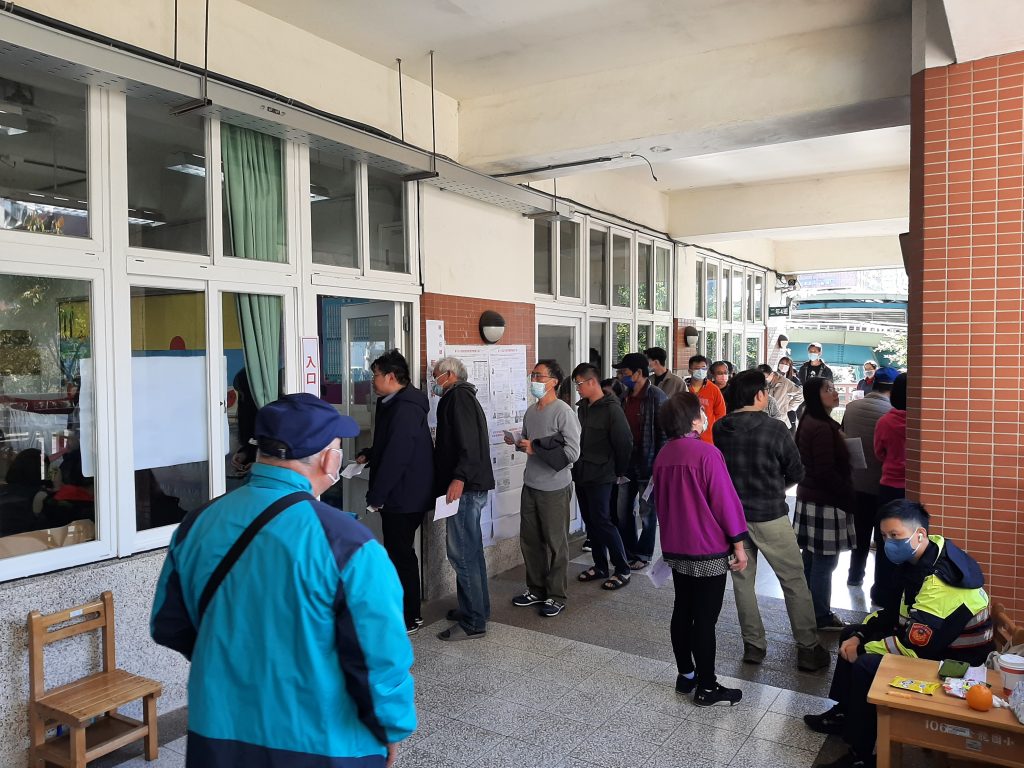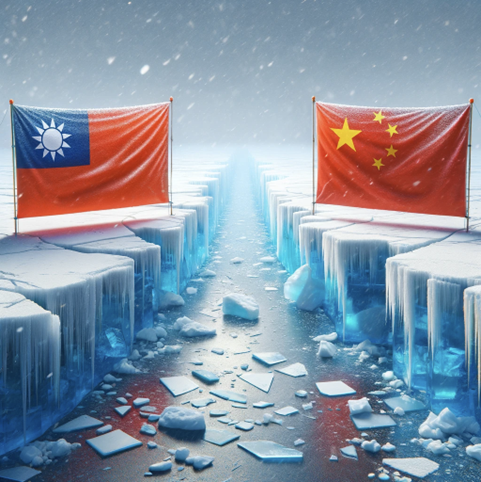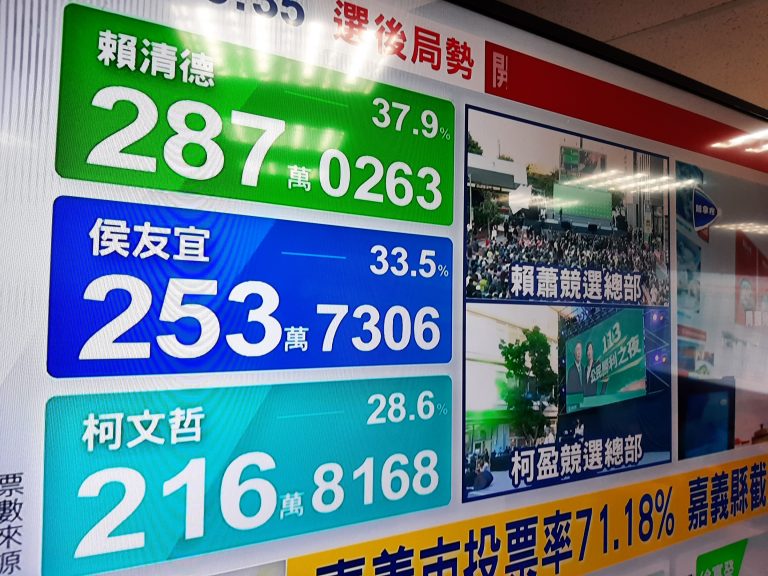By Michael Danielsen, Chairman of Taiwan Corner
The signals from Taiwan’s new government indicate that international continuity and political reforms in Taiwan will come into focus. In popular terms, a so-called AI government will be created, representing an active and innovative administration focused on domestic results after an election centered on the economy.
From an outside perspective, it may seem surprising that Taiwan’s greatest challenge is domestic. However, Taiwanese have lived with the threat from China for many years, and everyday life must function.
Taiwan held parliamentary and presidential elections on January 13, but before we dive into the many consequences, it is crucial to understand the election results and presidential candidates.
The Political Parties and Parliamentary Election

The main parties in the election were the Democratic Progressive Party (DPP), the Kuomintang or Nationalist Party (KMT), and the Taiwan People’s Party (TPP).
In the election, the DPP lost the majority it has held since 2016, and the KMT is now the largest party with 52 seats, followed by the DPP with 51 seats, and the TPP with 8 seats. The result was not surprising, with the KMT winning 14 extra seats. The TPP gained 3 extra seats and is now crucial for forming a majority in the 113-seat parliament. Two independent candidates entered the parliament, most likely to vote with the KMT.
The KMT’s result is not as convincing as it may seem. The DPP was only 6 seats away from a majority, and in 7 regions, the DPP lost by just 3 percentage points.
William Lai and His Path to the Presidency in Taiwan
In Taiwan, the president plays a central role as the president appoints the prime minister, who is responsible for forming the government.

William Lai from the DPP won the presidential election with 40% of the votes. He was previously a strong advocate for Taiwan’s independence but has become more mainstream over the years, and he is expected to continue the current foreign policy line.
William Lai has a long political career, serving as prime minister from 2017 to 2019 and mayor of Tainan. He was also a member of parliament for 11 years, and he will need that experience in a parliament without a DPP majority.
Hou You-yi from the Kuomintang (KMT) and Ko Wen-je (TPP) were also candidates. Hou continues as mayor of New Taipei City, while Ko will play a significant role in the coming years if he becomes an easier partner to work with.
Despite their differences, the three candidates agreed on maintaining the status quo, rejecting the “one country, two systems” model, protecting Taiwan’s sovereignty, and considering the Republic of China (ROC) as an independent country. This consensus underscores a broad political will to preserve Taiwan’s independence.
The KMT did not react with enthusiasm to former President Ma Ying-jeou’s statements that when it comes to Taiwan-China relations, one should trust China’s President Xi. The KMT then kept Ma away from a major campaign event.
The Economy Concerns the Taiwanese
For the Taiwanese, domestic issues are more important than the geopolitical agenda. Concerns about economic development clearly top the list, followed by relations with China. Education policy, legal reforms, and pension reforms are next.
The reason for voters’ priorities lies in economic details. Although Taiwan’s economy shows strong macroeconomic indicators with an average annual growth rate of 3.1% since 2016 and an unemployment rate of only 3.3% – the lowest since 2000 – Taiwan faces economic challenges. These include high living costs, an escalating real estate and education market, and wage development that does not match the increase in living costs.
At the heart of Taiwan’s challenge lies an economic model based on cost minimization, undermining the potential for wage increases. A key to the solution is the development of an even stronger knowledge economy that spans the entire value chain from production to marketing. Such a shift will not only raise wages but also strengthen Taiwan’s global position.
Political Reforms in Taiwan: A Course Towards the Future
The various political parties unsurprisingly have different visions for how to best address economic challenges.
The DPP emphasizes deep reforms to promote Taiwan’s knowledge economy. The DPP’s strategy focuses on stimulating innovation and growth through investments in key areas such as green technology, biotechnology, and the Internet of Things (IoT). However, such reforms are both time-consuming and challenging, not least due to political interference in the market, and success has not yet been fully realized.
On the other hand, the KMT and TPP argue for a more market-driven approach, with a particular focus on improved trade and cooperation with China, but they do not agree on the basis for cooperation with China. For example, the TPP has a much stronger focus on Taiwan’s independence than the KMT.
Taiwan’s Challenging International Position
In the current global context, Taiwan, like the rest of the world, finds itself in a challenging situation. Taiwan’s future seems to be shaped by external forces such as the USA, EU, and China.
However, it is crucial who sits in government offices despite international forces. Ukraine serves as a significant example of this. Although Taiwan is not immune to global political dynamics, the country’s leadership has a significant influence on how the island is perceived internationally. Over the past 8 years, Taiwan has been perceived as peaceful, accessible, and sympathetic, contrasting with China’s often aggressive behavior.
It is clear that the world values stability in a DPP-led Taiwan. Over the past 8 years, relations between, for example, the EU and Taiwan have been strengthened, as seen in ministerial meetings in both Germany and Taiwan, increased Taiwanese investments in Europe, and frequent visits by European politicians. The relationship is based not only on shared values but also on direct economic interests, including investments and trade in computer chips and wind turbine production.
So, Where Does This Leave China?
In the current geopolitical context, China faces an increasingly confident Taiwan that enjoys growing international sympathy. This development represents a potential risk for China – a risk from China’s perspective for a permanent separation from Taiwan.

Status quo is a way out of the problem. The term “status quo” is problematic because it suggests a form of stability, but in reality, the world and the relationship between Taiwan and the rest of the world are constantly changing.
Predictions about the development between Taiwan and China are complex, and although I do not expect an invasion – mainly due to the risk of military defeat and economic consequences – China will likely continue to exert economic pressure on Taiwan, conduct military exercises to varying degrees, live with the status quo defined as the current geographical boundaries, spread disinformation, and pressure countries and companies internationally over the next four years.
This will demonstrate that China maintains its claim to Taiwan and possibly waits for a political shift that could allow approaching Taiwan from another angle if the DPP loses the presidential election in 2028.
Another Chinese strategy focuses on positive mentions of visits to China. This happened when Taiwan’s former president Ma Ying-jeou met with President Xi in April during a so-called peace trip. Here, Ma stated that both sides are Chinese, although 61.7% in Taiwan perceive themselves as Taiwanese. Politically, China can use the visit both domestically and internationally, where China is under increased international pressure. The visit can show that China is open to dialogue with Taiwanese with the right attitudes. The dialogue angle was strengthened when 17 of KMT’s parliament members subsequently visited China. During the visit, China made it clear that both the 1992 consensus and the one-China principle should be maintained by both sides, and thus that Taiwan is part of China. China’s one-China principle says, unlike one-China policies, that Taiwan is part of China. The 1992 consensus is used by China and the KMT and states that there is one China, but there are different perceptions of what this China is.
The KMT does not have a majority in Taiwan’s parliament, and neither the DPP nor the TPP agree to such formulations when it comes to cooperation with China. Future solutions do not lie in reinventing a past that the Taiwanese do not want to be part of.
Taiwan’s Future
As Taiwan develops an increasingly strong self-awareness, we see a markedly developing Taiwan. Recent events and political developments within Taiwan’s borders highlight a broad desire for independence and a deeper political consciousness, especially among the younger generation. This contrasts sharply with the relatively static international view where the one-China policy remains the prevailing doctrine without significant nuances or adaptation to the present.
In this light, we should reflect on our own positions: Are we locked in outdated and unproductive perspectives? Dialogue, understanding, and respect for the real wishes of the Taiwanese should be the cornerstones of our approach to Taiwan.




